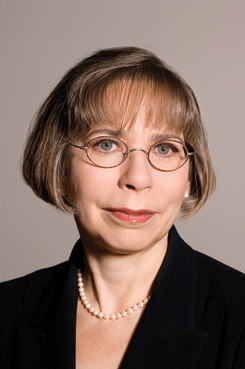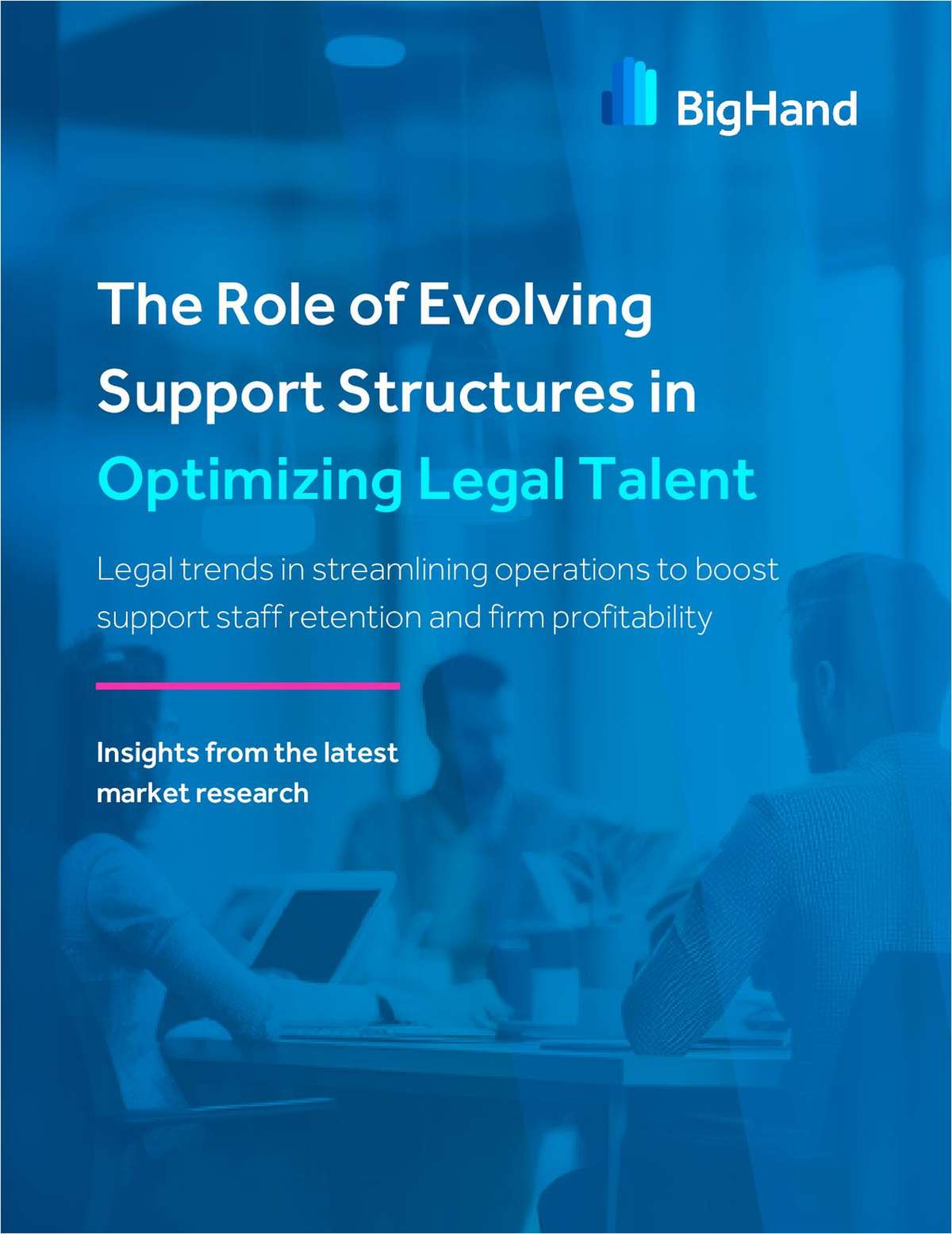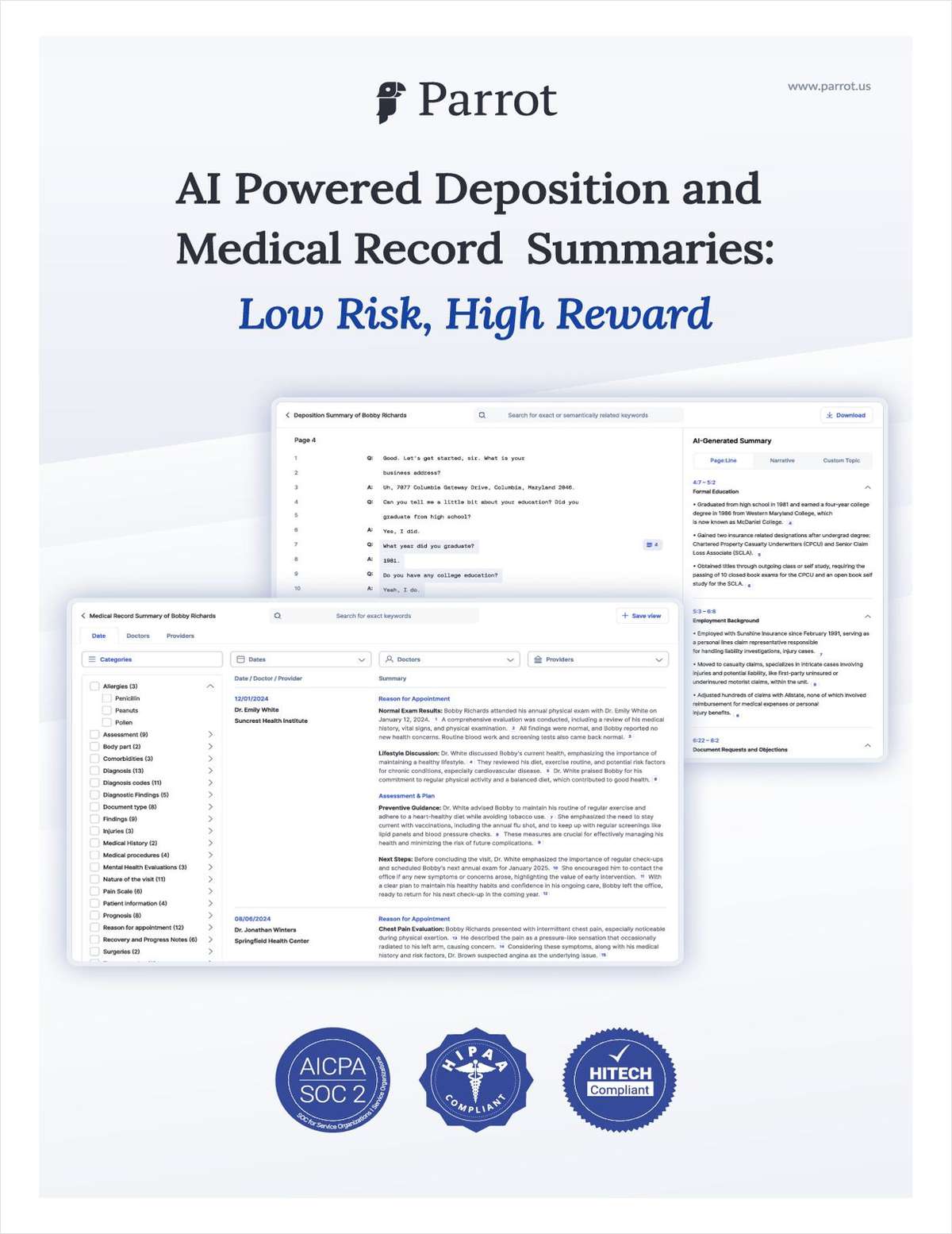Patent Litigation in the Cannabis Industry—2 Cases to Review
Law students are taught that one purpose served by the civil legal system is to provide predictability in business. For the cannabis industry, predictability remains a work in progress in view of conflicting federal and state laws and regulations.
March 25, 2019 at 10:35 AM
8 minute read
The original version of this story was published on The Legal Intelligencer
 Gretchen Temeles, of Duane Morris
Gretchen Temeles, of Duane Morris
Law students are taught that one purpose served by the civil legal system is to provide predictability in business. For the cannabis industry, predictability remains a work in progress in view of conflicting federal and state laws and regulations. Cannabis is a Schedule I controlled substance under the Controlled Substances Act, and possession of cannabis is a Class I felony under federal law. Nevertheless, 33 U.S. states and the District of Columbia have legalized medical cannabis, and 10 U.S. states and the District of Columbia have legalized recreational cannabis. This legal patchwork creates challenges for companies in the cannabis industry in banking, taxation, real estate, insurance and other areas that are routine for businesses in other industries.
Patent procurement for cannabis-related inventions is not beset by unpredictability. The U.S. Patent and Trademark Office (USPTO), a federal agency, routinely examines and grants patents covering cannabis-related technologies despite cannabis remaining a controlled substance under federal law. The USPTO applies the same standards to cannabis-related applications as it does to patent applications covering any other technology. An applicant must show that the claims are new, useful and not obvious, and must teach one of ordinary skill in the art how to make and use the invention. The number of granted patents and newly filed patent applications in the cannabis industry is increasing steadily and shows no signs of tapering off.
In contrast to patent procurement, patent enforcement in this emerging industry is at an early stage. A patent is a valuable business tool that provides the patent holder with the right to take legal action to prevent a competitor from engaging in activities such as making or selling the patented technology. Because enforcement of patent rights is governed by federal law, the Schedule I status of cannabis continues to cast uncertainty over whether cannabis patent rights can actually be challenged or enforced. Recent legal proceedings focused on cannabis-related patents show that the Schedule I status of cannabis is not an impediment to patent proceedings at either the Patent Trial and Appeal Board (PTAB) of the USPTO or U.S. Court of Appeals for the Federal Circuit. Although the sample size is small, these cases provide some insight to what patent holders, challengers and other cannabis industry stakeholders might expect in the area of patent enforcement going forward.
- Cannabis patent litigation before the PTAB: Insys Development v. GW Pharma Limited and Otsuka Pharmaceutical
Inter partes review (IPR) is a trial proceeding at the PTAB of the USPTO that permits a third-party to challenge the validity of claims of a granted patent. If the challenger demonstrates that the claimed technology was known to the public before the patent application was filed, then the claims fail to meet the novelty and nonobviousness requirements and the PTAB can declare the claims invalid.
The first IPR decision on a patent covering a cannabis-related technology was issued by the PTAB on Jan. 3, in Insys Development v. GW Pharma Limited and Otsuka Pharmaceutical, (IPR 2017-00503).
In the Insys IPR, the Schedule I status of cannabis was not raised either in the PTAB's decision to institute the IPR or in the PTAB's final decision. Instead, the PTAB focused on classic issues familiar to patent practitioners: obviousness and the qualifications of experts. Claim 1 of the challenged patent, U.S. Patent No. 9,066,920, reads:
- A method of treating partial seizure comprising administering cannabidiol (CBD), to a patient wherein the CBD is present in an amount which provides a daily dose of at least 400 mg.
The challenger in this IPR argued that the claimed dosage was obvious based on multiple prior art references, including one that described a slightly lower dosage for the treatment of seizures. Issues surrounding dosage range arise regularly during prosecution of biotechnology and pharmaceutical patent applications. The parties also clashed over whether particular experts were qualified to opine on the patented technology. However, the disagreement was not about the experts' experience in the cannabis area. Rather, it was about the experts' qualifications in the areas of pharmacology and treatment of epilepsy. In the end, the PTAB was persuaded that claims 1 and 2 were invalid as obvious over various prior art references, but let stand other claims relating to the combination of CBD and another cannabinoid, cannabivarin. The PTAB's decision was based on legal and scientific arguments and nothing more.
- Cannabis patent litigation in federal court: United Cannabis v. Pure Hemp Collective
The first infringement case in federal court on a patent covering a cannabis-related technology was filed on July 30, 2018, when United Cannabis Corp. (UCANN) sued Pure Hemp Collective in the U.S. District Court for the District of Colorado (Case No.: 1:18-cv-01922-NYW) for patent infringement. Both companies are located in Colorado and sell cannabis-containing products.
The litigation remains pending, but so far, the Schedule I status of cannabis has not been mentioned, and there is nothing in the court docket or filings to indicate that the court has treated this case any differently than any other patent litigation.
The parties have focused on issues typical in patent litigation. In its complaint, UCANN alleged that Pure Hemp's manufacturing and selling of a particular cannabinoid formulation infringes one or more claims of its patent, U.S. Patent No. 9,730,911 (the '911 patent). Exemplary claim 10 of the '911 patent reads:
- A liquid cannabinoid formulation, wherein at least 95 percent of the total cannabinoids is cannabidiol (CBD).
In response, Pure Hemp denied infringement and counterclaimed that the claims of the '911 patent are invalid. Pure Hemp alleged that substantially pure liquid CBD products were known to the public for at least 50 years before the filing date of the '911 patent. Pure Hemp cited scientific publications, a granted patent, and sales catalogs from scientific reagent companies selling purified CBD. Based on these references, Pure Hemp alleged that the claims of the '911 patent were anticipated or obvious and thus invalid. Pure Hemp also alleged that the claims of the '911 cover subject matter that is not patentable, relying on the U.S. Supreme Court decision in Association for Molecular Pathology v. Myriad Genetics, 569 US 576 (2013), where the court held that claims directed to isolated naturally occurring compounds were not patent eligible. Pure Hemp alleged that because cannabinoids are naturally occurring compounds, claim 10 is patent ineligible and invalid.
Pure Hemp later filed a motion seeking early, partial summary judgment that all of the asserted claims in the '911 patent are invalid because they are directed to patent-ineligible natural phenomena, namely cannabinoids and terpenes found naturally in the cannabis plant. In its opposition brief, filed on Dec. 31, 2018, UCANN countered that the claims as a whole are not directed to a natural phenomenon and are instead directed to human-modified liquid cannabinoid formulations that have markedly different physiologic effects than do cannabinoids found in nature and are thus patent eligible.
This case is still in the early stage and a trial date has not yet been set. However, as was the case for Insys IPR at the PTAB, the Schedule I status of cannabis was not a barrier to asserting a cannabis-related patent in federal court. Cannabis patent litigation appears to proceed in the same way as other patent litigation. The issues raised about the validity of cannabis-related patent claims are no different than the issues raised about the validity of claims directed to any other subject matter. But, there are still unanswered questions about patent enforcement proceedings for cannabis-related inventions. In its complaint, UCANN requested an award of damages to compensate UCANN for Pure Hemp's infringing activity. Will a federal court order a defendant to pay damages to a plaintiff for lost profits on sales of a product that is illegal at the federal level?
Takeaways
Enforcement of patents covering cannabis-related technologies is not dependent upon legality of cannabis at the federal level. Enforcement is happening now even though damages and remedies in patent enforcement proceedings have not yet risen to the level of predictability seen in other technologies. And the number of enforcement actions is likely to increase as the industry matures and consolidates.
Going forward, companies and other stakeholders in the industry should take proactive steps in managing their patent portfolios. For cannabis patent holders, regular and systematic evaluation of granted and pending applications in view of the company's commercial goals and competitor's activities is important. The claims in the cases discussed above were characterized by challengers as overly broad, and, in both cases, the challengers identified older literature that was relevant to patentability that was apparently overlooked by the USPTO during prosecution. Anyone seeking to secure patent protection for a cannabis-related invention should consider doing a careful analysis of patent and nonpatent literature prior to filing a patent application.
Gretchen L. Temeles, an associate at Duane Morris, practices in the area of intellectual property law with a focus on the biotechnology, pharmaceutical and chemical industries.
This content has been archived. It is available through our partners, LexisNexis® and Bloomberg Law.
To view this content, please continue to their sites.
Not a Lexis Subscriber?
Subscribe Now
Not a Bloomberg Law Subscriber?
Subscribe Now
NOT FOR REPRINT
© 2025 ALM Global, LLC, All Rights Reserved. Request academic re-use from www.copyright.com. All other uses, submit a request to [email protected]. For more information visit Asset & Logo Licensing.
You Might Like
View All
Trump's DOJ Delays Releasing Jan. 6 FBI Agents List Under Consent Order
3 minute read
Selendy Gay Files Lawsuit Challenging Trump's Workforce Reclassification EO
2 minute read

Dissenter Blasts 4th Circuit Majority Decision Upholding Meta's Section 230 Defense
5 minute readTrending Stories
- 1With DEI Top of Mind, Black Judges Discuss Growing Up During Segregation, Efforts to Diversify the Profession
- 2Big Law's Middle East Bet: Will It Pay Off?
- 3'Translate Across Disciplines': Paul Hastings’ New Tech Transactions Leader
- 4Milbank’s Revenue and Profits Surge Following Demand Increases Across the Board
- 5Fourth Quarter Growth in Demand and Worked Rates Coincided with Countercyclical Dip, New Report Indicates
Who Got The Work
J. Brugh Lower of Gibbons has entered an appearance for industrial equipment supplier Devco Corporation in a pending trademark infringement lawsuit. The suit, accusing the defendant of selling knock-off Graco products, was filed Dec. 18 in New Jersey District Court by Rivkin Radler on behalf of Graco Inc. and Graco Minnesota. The case, assigned to U.S. District Judge Zahid N. Quraishi, is 3:24-cv-11294, Graco Inc. et al v. Devco Corporation.
Who Got The Work
Rebecca Maller-Stein and Kent A. Yalowitz of Arnold & Porter Kaye Scholer have entered their appearances for Hanaco Venture Capital and its executives, Lior Prosor and David Frankel, in a pending securities lawsuit. The action, filed on Dec. 24 in New York Southern District Court by Zell, Aron & Co. on behalf of Goldeneye Advisors, accuses the defendants of negligently and fraudulently managing the plaintiff's $1 million investment. The case, assigned to U.S. District Judge Vernon S. Broderick, is 1:24-cv-09918, Goldeneye Advisors, LLC v. Hanaco Venture Capital, Ltd. et al.
Who Got The Work
Attorneys from A&O Shearman has stepped in as defense counsel for Toronto-Dominion Bank and other defendants in a pending securities class action. The suit, filed Dec. 11 in New York Southern District Court by Bleichmar Fonti & Auld, accuses the defendants of concealing the bank's 'pervasive' deficiencies in regards to its compliance with the Bank Secrecy Act and the quality of its anti-money laundering controls. The case, assigned to U.S. District Judge Arun Subramanian, is 1:24-cv-09445, Gonzalez v. The Toronto-Dominion Bank et al.
Who Got The Work
Crown Castle International, a Pennsylvania company providing shared communications infrastructure, has turned to Luke D. Wolf of Gordon Rees Scully Mansukhani to fend off a pending breach-of-contract lawsuit. The court action, filed Nov. 25 in Michigan Eastern District Court by Hooper Hathaway PC on behalf of The Town Residences LLC, accuses Crown Castle of failing to transfer approximately $30,000 in utility payments from T-Mobile in breach of a roof-top lease and assignment agreement. The case, assigned to U.S. District Judge Susan K. Declercq, is 2:24-cv-13131, The Town Residences LLC v. T-Mobile US, Inc. et al.
Who Got The Work
Wilfred P. Coronato and Daniel M. Schwartz of McCarter & English have stepped in as defense counsel to Electrolux Home Products Inc. in a pending product liability lawsuit. The court action, filed Nov. 26 in New York Eastern District Court by Poulos Lopiccolo PC and Nagel Rice LLP on behalf of David Stern, alleges that the defendant's refrigerators’ drawers and shelving repeatedly break and fall apart within months after purchase. The case, assigned to U.S. District Judge Joan M. Azrack, is 2:24-cv-08204, Stern v. Electrolux Home Products, Inc.
Featured Firms
Law Offices of Gary Martin Hays & Associates, P.C.
(470) 294-1674
Law Offices of Mark E. Salomone
(857) 444-6468
Smith & Hassler
(713) 739-1250








